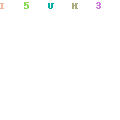Debnath was in hospital for the past 25 days. Just five days back, even as he was on respiratory support, he was awarded the Padma Shri.
President Ram Nath Kovind expressed his sadness at Debnath’s death, saying it was a “big loss to the world of Bengali literature.” Prime Minister Narendra Modi, too, expressed his condolences, saying, “the characters he created will remain eternally popular.” Bengal chief minister Mamata Banerjee, in her statement, said Debnath’s characters “have been etched in our hearts for decades.”
Debnath began working in an era when the term “graphic novel” hadn’t yet been coined, and decades before comic-art was considered “respectable”. Born in Shibpur, he displayed a creative bent of mind from his childhood, even as a student of BK Pal School. He hailed from a family that was in the trade of gold jewellery and used to draw designs at his ancestral shop. “My grandfather was so impressed seeing a sketch that he got him admitted to the fine arts department of the Government College of Art and Craft,” said nephew Sanjay Debnath.
Debnath left his five-year course in his fourth year. “In between, he joined a printing press and was spotted by Deb Shahitya Kutir. He was tasked with sketching an episode on PC Sorcar (Senior). The magician was so impressed that he wrote back to him, expressing admiration. This fondness grew and he would write to my uncle from all parts of the world,” Sanjay said.
Handa Bhonda, started by Pratul Chandra Bandyopadhyay, gained popularity in Debnath’s hands in 1962. But Debnath’s name became a household one with Bantul The Great, the strong boy-next-door with a Superman-like invulnerability and invincibility, who could not be harmed by bullets and was, again like Superman, a do-gooder, astounding everyone with impossible feats of strength. There are stories of Debnath having drawn the first sketch of Bantul on a tram ticket.
“A comic journal called The Dandy used to publish a comic called Desperate Dan and Korky The Cat in 1937. Both were Debnath’s inspirations for developing Bantul and Bahadur Beral,” said Jadavpur University’s Amritesh Biswas, whose PhD thesis has a chapter on Debnath. “Bantul was first published in 1965. Initially, he was a regular parar dada. He became popular after Bangladesh’s Liberation War in 1971, when many strips show him defeating the Pakistani army. Bantul became a symbol of the victory of good over evil. Later on, he even took on terrorists,” Biswas added.
Nonte Ar Phonte made their first appearance in a comic book in 1982. “Interestingly, these characters were inspired by Satyen Bose’s ‘Paribartan’ (1949), which had two naughty boys as protagonists. Through this strip, he celebrated Bengal’s culture that has had a big space for the unadulterated fun of school days,” Biswas said.
Debnath was a more versatile artist than what he has been credited for, pointed out Jadavpur University professor Abhijit Gupta, who is an archivist of Bengali comics. While Debnath has mostly been associated with children’s comics, “he also did a lot of other comics that are not that well-known,” Gupta said. “For instance, he did detective comics for Kishore Bharati. It was the Black Diamond series that was published in the 60s. He occasionally did biographical comics for Deb Sahitya Kutir’s Shuktara. These are significant because there he was able to explore different kinds of styles.”
Unfortunately, not many have seen them since they appeared only in magazines and periodicals. He had also created a female duo. “There are very few female characters in Bengali comics. He did a short-lived Shuntki Aar Mutki series, starring a thin and fat girl. These were among the few female characters in the Bengali comic space,” Gupta said.
The biographical strips were realistic in style, Gupta said. The Black Diamond series had a lot of “light-and-shade and cross-hatching. It was darker in certain ways than Handa-Bhonda and Bantul. The stories were written by Dilip Kumar Chattopadhyay and he used a lot of styles from cinema. There were these long, close and medium shots. Most of the stories were presented like cinematic credits.”
Cartoonist, graphic novelist and documentary film-maker Sarbajit Sen was introduced to Debnath’s comics in childhood. “Back then, I loved his clean drawings. He presented a set of characters with a next-door appeal. It isn’t easy to sustain and survive by pursing this profession. Later on, I appreciated the way he consistently did so and worked for so long,” Sen said. Author Sirshendu Mukhopadhyay, too, admired the way Debnath had relentlessly worked till the very end.
Actor Kharaj Mukhopadhyay said he owed a lot to Debnath for being able to bring out humour in his acting. An avid reader of Bantul, he belongs to the generation that collected his strips. “The simplicity of the characters was appealing. I loved their trademark wardrobe and Batul’s haircut. Reading the strips was pure enjoyment and triggered our imagination,” the actor recalled.
Much later, while making inroads in acting, Mukhopadhyay got an assignment to be a part of an animation series based on Debnath’s works. “I had to take Kanchal Mullick and Rudranil Ghosh to dub for the animation project on Handa-Bhonda. I dubbed for Bantul’s animation. We had to bring these immortal characters to life through vocal modulation. This was such a great learning experience, and shaped all of us as actors,” he added.
Perhaps the collective sadness of people following Debnath’s demise was best described by actor Paran Bandyopadhyay. “Narayan Debnath’s works appealed to the eternal child in us. Children and youngsters love his work. Re-reading him after growing up continues to leave a smile on our lips. It brings back memories of our childhood. A magician with creative emotions, he saw so much for decades and shared the essence of his creativity with everyone,” Bandyopadhyay said.
Source: https://timesofindia.indiatimes.com/city/kolkata/narayan-debnath-dies-a-slice-of-childhood-lost/articleshow/88983492.cms



